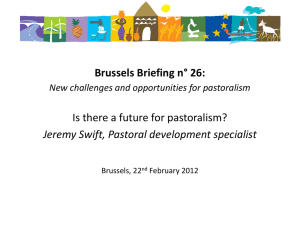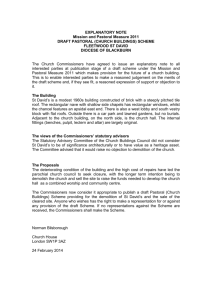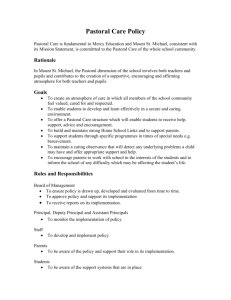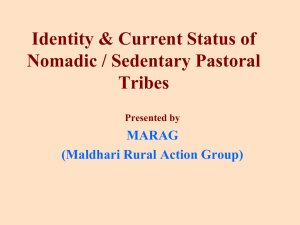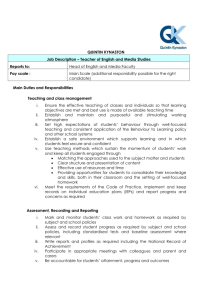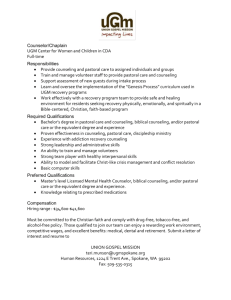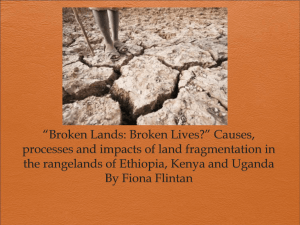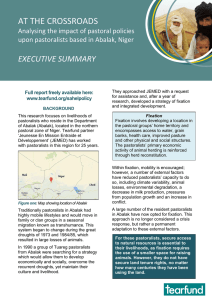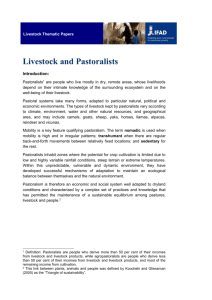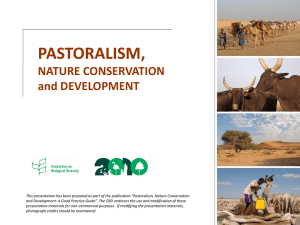Ethiopia
advertisement
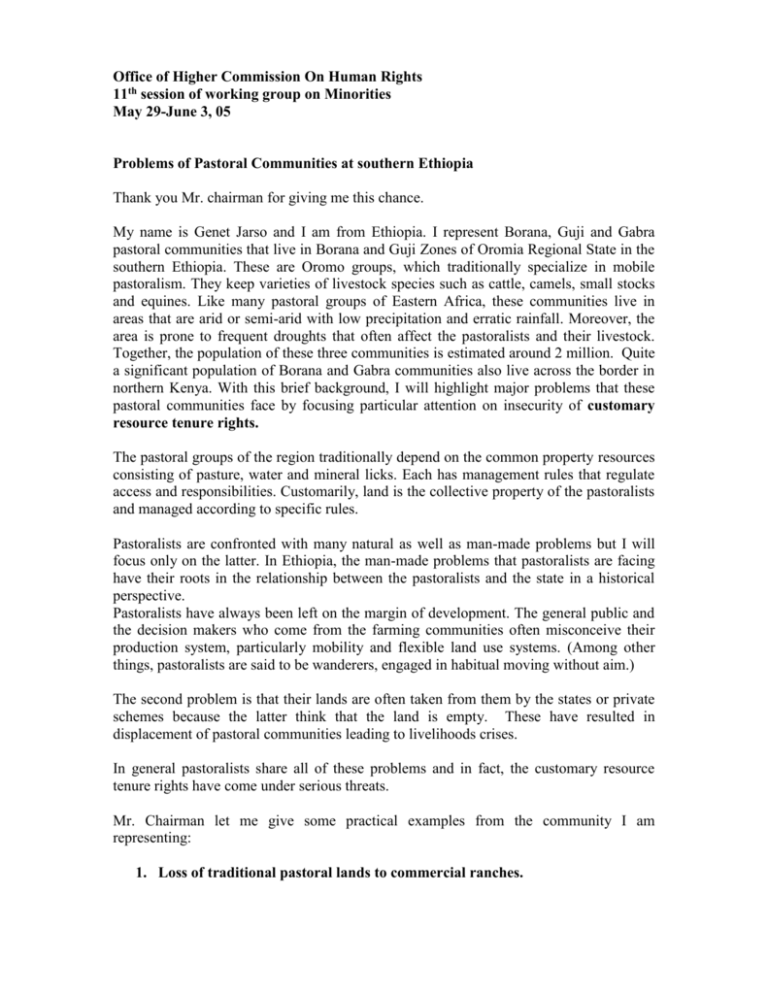
Office of Higher Commission On Human Rights 11th session of working group on Minorities May 29-June 3, 05 Problems of Pastoral Communities at southern Ethiopia Thank you Mr. chairman for giving me this chance. My name is Genet Jarso and I am from Ethiopia. I represent Borana, Guji and Gabra pastoral communities that live in Borana and Guji Zones of Oromia Regional State in the southern Ethiopia. These are Oromo groups, which traditionally specialize in mobile pastoralism. They keep varieties of livestock species such as cattle, camels, small stocks and equines. Like many pastoral groups of Eastern Africa, these communities live in areas that are arid or semi-arid with low precipitation and erratic rainfall. Moreover, the area is prone to frequent droughts that often affect the pastoralists and their livestock. Together, the population of these three communities is estimated around 2 million. Quite a significant population of Borana and Gabra communities also live across the border in northern Kenya. With this brief background, I will highlight major problems that these pastoral communities face by focusing particular attention on insecurity of customary resource tenure rights. The pastoral groups of the region traditionally depend on the common property resources consisting of pasture, water and mineral licks. Each has management rules that regulate access and responsibilities. Customarily, land is the collective property of the pastoralists and managed according to specific rules. Pastoralists are confronted with many natural as well as man-made problems but I will focus only on the latter. In Ethiopia, the man-made problems that pastoralists are facing have their roots in the relationship between the pastoralists and the state in a historical perspective. Pastoralists have always been left on the margin of development. The general public and the decision makers who come from the farming communities often misconceive their production system, particularly mobility and flexible land use systems. (Among other things, pastoralists are said to be wanderers, engaged in habitual moving without aim.) The second problem is that their lands are often taken from them by the states or private schemes because the latter think that the land is empty. These have resulted in displacement of pastoral communities leading to livelihoods crises. In general pastoralists share all of these problems and in fact, the customary resource tenure rights have come under serious threats. Mr. Chairman let me give some practical examples from the community I am representing: 1. Loss of traditional pastoral lands to commercial ranches. These include Dambala Wachu Ranch (12000 hectare, Sarite Ranch (17, 000 hectare), Walensu Ranch (25, 000 hectare), Dida Liban Ranch (4000 hectare), Dida Tuyura Ranch (above 4000 hectare), Agirte Ranch (about 800 hectare) and the proposed Melbana Group Ranch, which covers 56 square kilometers of rangeland. In some cases, the community has lost access to many ritual sites because of the establishment of private ranch at ritual grooves (e.g. Dida Liban Ranch). Although some of these sites are temporarily under the de facto control of the community, economically powerful and politically well connected individuals or groups from the up country may take them from the pastoralists at any time. From experience in other parts of Ethiopia so far, it seems that there is no guarantee against land loss. The problem may be worsened if the land privatization policy, which many international and national forces are pushing today, is adopted. 2. Huge rangelands along with water wells, that are both economically and culturally crucial particularly for Borana pastoralists, have been arbitrarily annexed to a competing region. The water well complexes of Gofa and Laye are examples. As a result, the right holders have lost their property. While this has already resulted in violent conflicts (which is claiming lots of life) between right-holding pastoral communities and the new occupants, the conflict is not resolved yet. Some few years ago, Ministry of Mines put for sale, a salt lake from which the pastoralists get mine mineral licks for their livestock. Although the traditional leadership seriously objected the attempt and the community at large and thus put on hold, people still suspect that the same may happen again. Because from experience at other parts of Ethiopia there is no guarantee for land loss. 3. Pastoral land is being seriously encroached on by the expansion of unsustainable agriculture. The pastoral areas are less suited to crop production due to physical aridity. However, the government is implementing in the pastoral areas rural development approach that is designed primarily for the crop-producing highland areas. The approach does not take into account environmental and social peculiarities of pastoral areas. The outcome of the expansion of farming and other exclusive areas in the rangelands are curtailment of mobility routes, evolution of private land ‘titles’ in the common property regime and land use conflicts within the community. 4. Inadequate institutional representation Until very recently, there was a total lack of government institution that represent pastoralism. Pastoral production system has not been included in any school curriculum, which clearly shows all experts are ignorant of pastoral production system except life experience of those with pastoral background. Recently, however, few NGOs are merging who are concerned about pastoralism. At regional level also Oromia Regional State has set up a Pastoral Development Commission but it is quite new to make experience. In sum, despite some positive developments in terms of policy initiatives with regard to institutional representation, a lot remains to be done in addressing the multifaceted pastoralist problems. Mr chairman let me finish my presentation by recommending the following to my government as well as UN: A. For the Regional and Federal States in the country Recognize and respect the pastoralists customary resource tenure rights to their resources Recognize and respect pastoral mobility Design and implement affirmative action of capacity building in order to address multi-faceted problems that pastoralists are facing. This includes creating access to pastoral education in a manner that is appropriate to ecological and socio-economic realities of pastoral regions Design and implement appropriate pastoral development approach that will support sustainable pastoralism B. For the UN Create a system whereby pastoral communities are represented at the UN Head Quarters. This is hoped for globally voicing the hitherto voiceless pastoralists.
